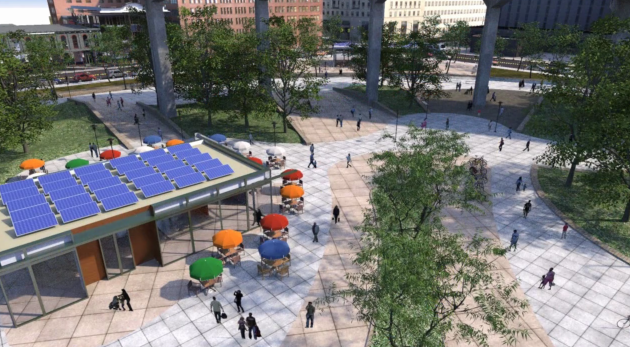A few blocks from where I live in Brooklyn looms the Gowanus Expressway, part of the urban interstate building boom of the 1950s that gutted so many American cities. Crossing underneath its moldering hulk is intimidating and depressing. No one likes to do it. Carroll Gardens, the neighborhood to the north of the expressway, is doing well, with new residential and retail development creeping right up to the edge of its shadow (although I’m not optimistic about the day spa someone just opened a half block away)
But to the south, in Red Hook, the devastation in the immediate vicinity of the road remains nearly complete — even though parts of that neighborhood away from the expressway have revived.
It is an urban planning failure of the highest order, and it is one that is replicated all over the country. You probably have something similar in your own city.
There has been endless talk about what to do with the Gowanus Expressway. Tear it down and replace it with a tunnel; tear it down and replace it with a surface highway; tear it down and replace it with something prettier; don’t tear it down, but fix it. For now, the road is being fixed and improved where it stands. The blighted streets beneath it are still being ignored. As tempting as it is to fantasize about what would happen if it were to vanish, that doesn’t seem likely to happen any time soon.
Which brings me to the video above, from the American Society of Landscape Architects. It looks at some creative possibilities for repairing parts of cities that have been designed around transportation systems “to the detriment of their own people.” The interventions include some that have been successfully implemented in many cities already, including rails-to-trails projects and pop-up cafés and parklets replacing curbside parking.
They also include building places that people might want to go underneath elevated roads. As I watched, I tried to imagine a park like the one shown sprouting up underneath the Gowanus Expressway. I’m somewhat skeptical that any amount of plantings and plazas, no matter how well designed, could mitigate the sheer awfulness of that place and attract people. But maybe I just don’t have enough imagination. And surely anything would be better than the status quo. I’d like to believe it could work.
What do you think? Can you envision a project like this working in your city or town?



